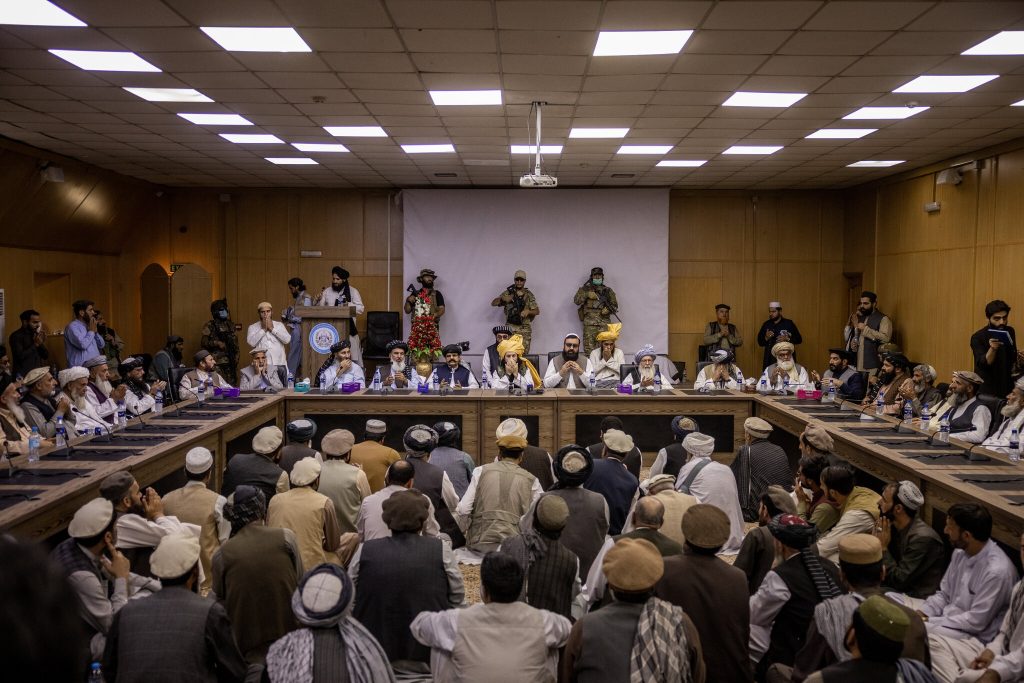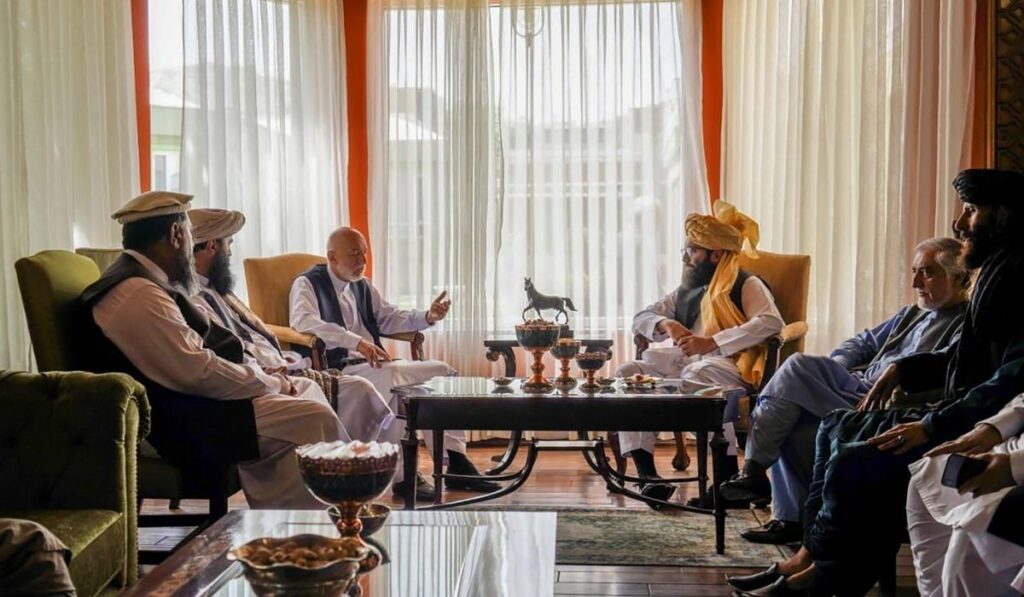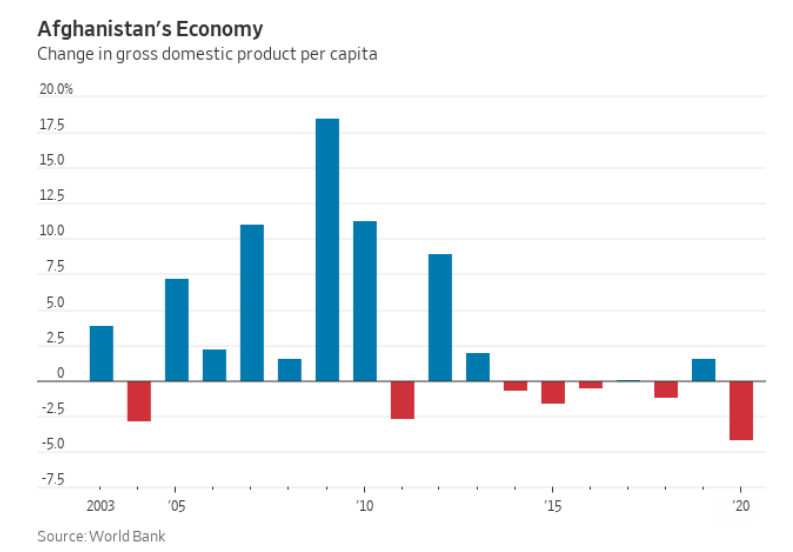Tough Road Ahead for Taliban
The Taliban after much wait has announced its 33-member interim cabinet. This new government is exclusively Taliban, and almost all the ministers are of Pashtun ethnicity.
(DPA Notes: The Taliban had since expanded it’s interim cabinet to 50 members on 21 September 2021, with several of them of the 17 from non-Pashtun ethnic groups, like the Hazara, Tajik and Uzbek. However, all of them are men. Taliban hinted that women might be added later.)

Women have no positions in this new setup. The Ministry of Women’s Affairs has been dissolved. And the sinister Ministry for the Propagation of Virtue and the Prevention of Vice has been re-established. This clearly illustrates that the Taliban will carry on with its medieval conservative interpretation of Islam.
More than a dozen members of the new cabinet are on the U.N. Security Council’s sanctions list. Sirajuddin Haqqani, deputy leader of the Taliban and now the interior minister, of the country. Heads the Haqqani network and is responsible for some of the most gruesome attacks on Afghan civilians as well as government and military targets throughout the war. He is on the FBI’s most wanted men list with a $10 million bounty on his head. It tells that the Taliban is nothing more than an extremist group that has grabbed power.

As the group tightens its hold on the country and power. The road ahead for them looks tough. So, let’s look at some major challenges which Taliban has to face in the coming time.
Stretched too thin
Afghan government use to have security forces numbering around 300,000 to maintain law and order, for fighting insurgency, and controlling borders. Now with almost all of Afghanistan under their control and with only around 80 to 90 thousand active fighters, the Taliban is stretched thin.

The Taliban found it easy to seize a large number of districts and provincial capitals with this size of force. But holding on to major cities is another proposition that requires significant amounts of manpower and resources which surely the group doesn’t have.
Growing Resistance
As the Taliban failed to form an inclusive government resentment among other ethnic groups is growing with each passing day. Former Vice President Amrullah Saleh and Ahmad Massoud son of legendary Mujahideen commander Ahmad Shah Massoud as of now leading the resistance against Taliban. But other leaders are also voicing their support for them. Most notably Ismail Khan a Tajik leader backed by Iran announced his support for Ahmad Massod led National Resistance Front (NRF). As of now, it looks that the Taliban doesn’t have any considerable opposition but there is an undercurrent that has a full-fledged potential of developing into a major threat for the Taliban regime.

Governance
Efficiently and effectively governing the country of 38 million people will be a major challenge for the new regime. The Taliban has been good at one thing i.e. fighting. But governing such a diverse country with many ethnicities will be a mammoth task.
Talibs have yet to demonstrate their capability to deliver good governance. They did not do so when they ruled Afghanistan for the first time during 1996-2001. The Taliban at times has been given credit for being good at maintaining security though through very heavy-handed means and providing efficient forms of traditional justice. But they have little to no technocratic and administrative understanding of how to perform the other functions of government. The group is bound to struggle to deliver effective governance to the common people.

As the government does not have sufficient funds to spend on public services like- healthcare, sanitation, and drinking water. “There are the issues of retaining enough manpower, bureaucracy, and civil servants to run the affairs of the government. With an exodus of people, one vulnerability could be an insufficient number of professionals and people in the technocratic cadres to run state institutions,” said Omar Samad, a senior fellow at the Atlantic Council.
Keeping Own House United
Taliban itself is engulfed with factionalism. The different factions in the Taliban are fighting among themselves for greater share and say in the new power dynamics. The Taliban is currently divided into three main camps.
The first one is the political wing that negotiated a peace deal with the United States led by Mullah Abdul Ghani Baradar. The second group is the military wing led by Molavi Yakoob son of Taliban founder Mulla Omar. The last one is the Haqqani Network headed by Sirajuddin Haqqani.
The Taliban’s success as an insurgent outfit rested on its ability to remain cohesive despite NATO pressure and efforts to fragment the group. But the group’s challenge of maintaining cohesiveness among its many different factions of varied ideological intensity and material interests is difficult now that it is in power.

Flattered Economy
Afghanistan is one of the poorest countries in the world and more than 20% of its gross income comes from foreign aid. The United States froze $9.5 billion of Afghan central bank’s assets in the wake of the Taliban takeover, while the International Monetary Fund (IMF) suspended access to its funds. In addition to this, more than 5 million Afghans are estimated to be internally displaced.

The United Nations says nearly 400,000 people have been displaced this year alone as a result of ongoing violence. For rehabilitating these people urgent aid is required from humanitarian agencies. Even if these agencies agree to deliver the aid the Taliban do not currently have institutional structures to receive the funds.

Diplomatic Isolation
Taliban’s first regime in 1996 was more or less a pariah globally. But this time, they appear keen on wide international acceptance, even as most nations have suspended or closed their diplomatic missions in Kabul. Also, none of the countries has recognized them yet, and the United States has said any legitimacy “will have to be earned”. Hence for any kind of acceptance by the international community Taliban has to pass the tough scrutiny of their actions.
Taliban has achieved a victory through military means and they have a firm grip over the power but the path ahead is full of big challenges. Which needs to be sorted out in time otherwise Talibs will witness a mass uprising against them sooner than later.
(Author is a political analyst for Middle-East and Af-Pak region and Editor of the geo-political news agency ViewsAround can be reached at manishraiva@gmail.com. Additional editing by Wyatt Lim)

